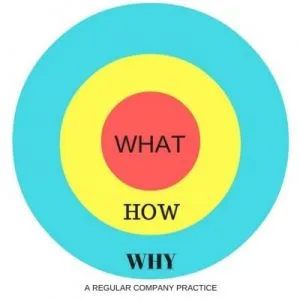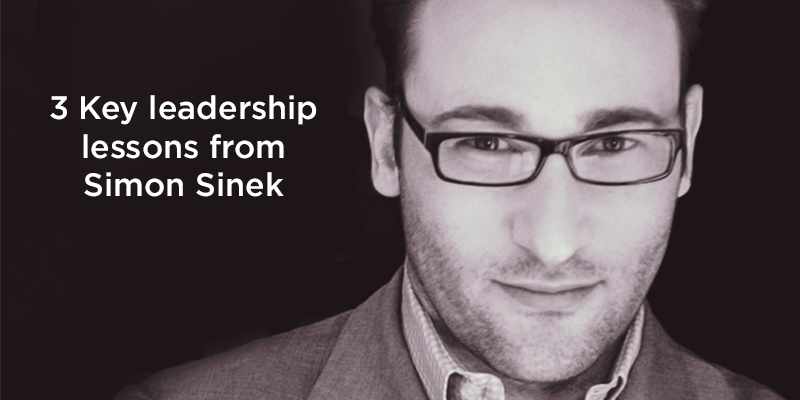3 key leadership lessons from Simon Sinek
Simon Sinek is much more than a management consultant based out of New York. The 42-year-old has given TED talks, and is a corporate speaker, evangelist, and celebrated author of bestseller books like “Start with Why” and “Leaders Eat Last”. He speaks across various stages on leadership and strategy, and also contributes to society through his not-for-profit organisational works.

Image Credit: TheArtOf
- How Leaders Inspire Action
Let’s talk about how leaders drive action in their organisation. Simon says that all big leaders think, act and communicate in the exact same way; they don’t wait for things to happen, they make them happen. Be it Steve Jobs, Martin Luther King or the Wright Bros, all of them followed the same pattern. Surprisingly, it is the opposite mindset that is adopted by most others.
So let us analyse the situation by taking the example of Apple. How did they become the world leader in the consumer electronics space? Why are all their competitors playing catch up? It is because of the sheer leadership abilities of the company’s great visionaries, who stuck to their vision and objectives and proved to the world that with strong determination and perseverance, you can be at the top, no matter what others say or think. The people at the helm took a simple vow- to produce and deliver products that exceeded customer expectations, with a great customer experience. Let us observe the below diagram to understand how it worked for them.


REGULAR PRACTICE INSIDE OUT – THE GOLDEN CIRCLE
The traditional strategy of a company can be summed up by image 1, wherein the primary focus is on What the product is. Post communicating the nature of their product, the company elaborates on the question of How - how they ensure better quality, better customer service or lower costs than their competitors. Only then does the question of Why arise, if it arises at all; most companies just don’t seem to grasp the importance of the ‘why’.
Apple’s strategy, and that of several other extremely successful businesses, follows the Golden Circle or the Inside Out Theory, summed up by image 2. Apple focused first and foremost on the Why- they focused on the story behind the product, on why customers deserved a great experience, on the needs that they were addressing. They emphasised on the quality of their offerings and why they had to provide such quality. Only then did the How and the What become relevant.
Apple managed to transmit the energy it felt to its customers and made them believe. Everything else fell into place. Clearly, the Inside Out Theory takes a big leap in any universal market in the long run.
- Leaders Eat Last
The title of a book written by Mr Sinek, the phrase is meant to convey an important reality about leadership. Leadership in business is not just about leading a bunch of colleagues or subordinates; it is about having a real empathetic relationship with them. A leader always considers his colleagues as the most dependable people around and stands by them when required.
He says, “Always face the danger first, don’t put the newly recruited trainee in jeopardy; the layer system never works when slog is on war-footing.” You have to throw yourself into the shock before it takes hold of your fellow employees.
He remembers a photograph he had seen of the shooting in Kenya. The picture was taken by a photographer who happened to be inside the building. “It is chaotic,” he says. The image haunts him every day. The picture shows a mother lying on top of her child to protect him from the wrath of a militant. In the real world, that’s leadership. It’s a biological leadership, though business leadership is no different from this. The only thing that matters is how true and real you are to your subordinates and colleagues.
A leader’s acts are scrutinised when he fails, but the work of his subordinates count when he succeeds.
- What does it mean to lead?
You are allowed to take shortcuts; you are very much allowed to do what others are not doing. He says that you should go after the thing you want and employ the means necessary to get it, but not at the cost of fiddling with others.
He narrated one incident from when he visited Quantico Marine Base in the US. One of the colonels there threw a marine out of the job just because he slept for a few minutes on duty. Simon asked the colonel why it was such a big deal considering that there were many others patrolling and that the concerned marine was possibly just dozing because of a heavily loaded duty schedule. The colonel went on to clarify that the marine’s offence was not primarily the fact that he had been asleep, but that he had denied it on being questioned, thus refusing to take responsibility for his own actions. A leader must always own up to his own actions, else he is not a true leader. Discipline and accountability are the two most important traits of a true leader in action.
The other side of being a genuine leader is the ability to ask for help when it is needed, and to accept it when offered. A refusal to accept one’s own ignorance when it comes to some things can be dangerous at times. Simon narrates an interesting story to illustrate his point.
A former captain of a submarine that Simon once interacted with, a gallant commander of his time, told him of his experience commanding a new vessel, one with which he was unfamiliar, after a year of captaining a considerably different craft. During the first instance of his command, a pilot test for the vessel, the captain was both surprised and embarrassed to find that, after an attempt to order the ship into motion, he wasn’t even aware of the movement settings of the new vessel under his command. This was pointed out to him by the crewmembers of his ship. He ensured that he was thoroughly well versed with the intricacies of the ship on its second pilot, learning from all his subordinates.
The key here is that the captain was willing to admit his ignorance and learn what he had to, accepting help that he acknowledged as necessary. It is important to understand the limits of your knowledge and move forward to improve yourself using all means necessary, including asking for help.
When you trust people, they rise to the occasion. And when everything goes right, you share the credit with your people. Never forget how you started.
(Disclaimer: The views and opinions expressed in this article are those of the author and do not necessarily reflect the views of YourStory.)










![[Funding alert] Accel Partners leads Rs 27 Cr pre-Series A round in debt resolution startup Credgenics](https://images.yourstory.com/cs/2/11718bd02d6d11e9aa979329348d4c3e/Imageeukn-1606192940102.jpg)
